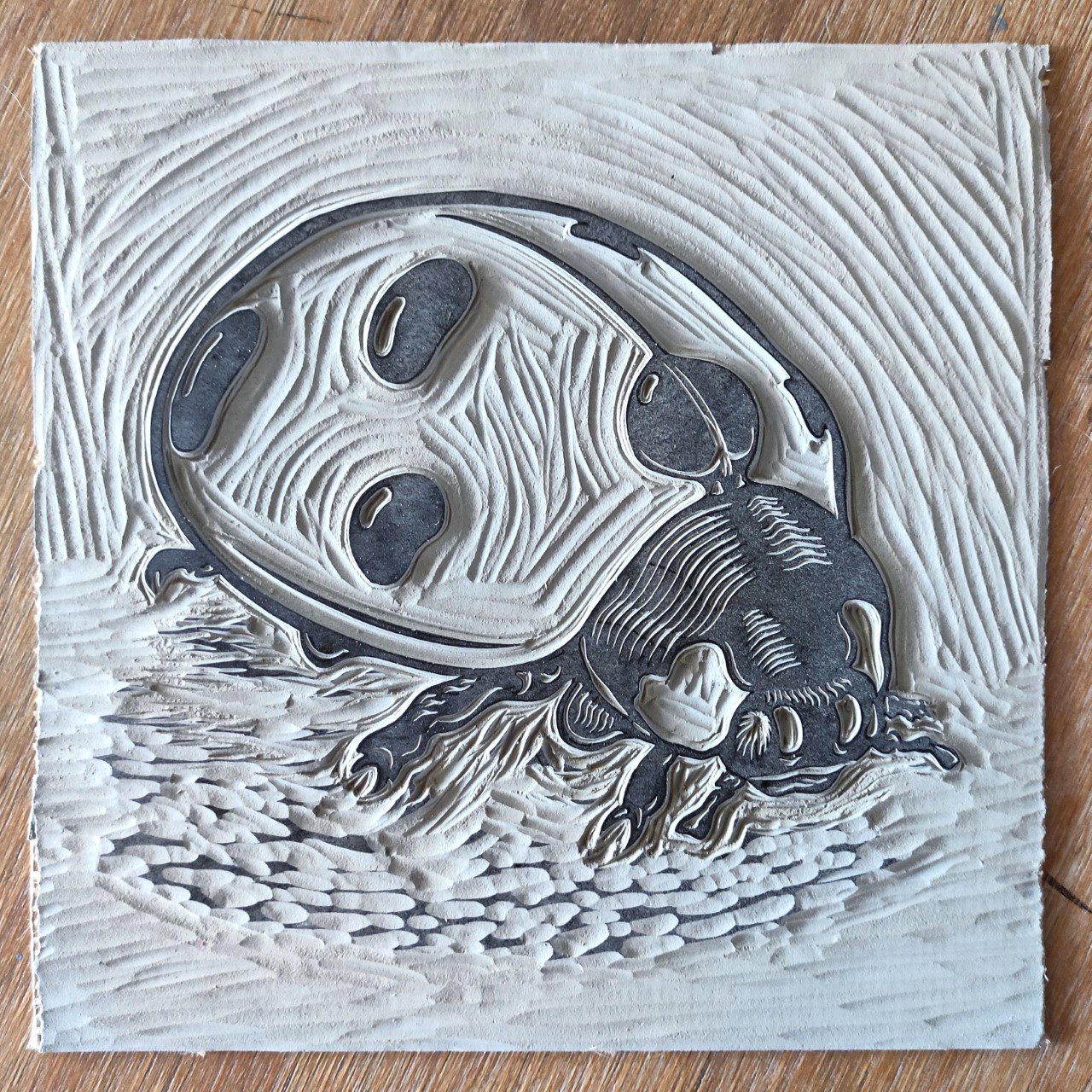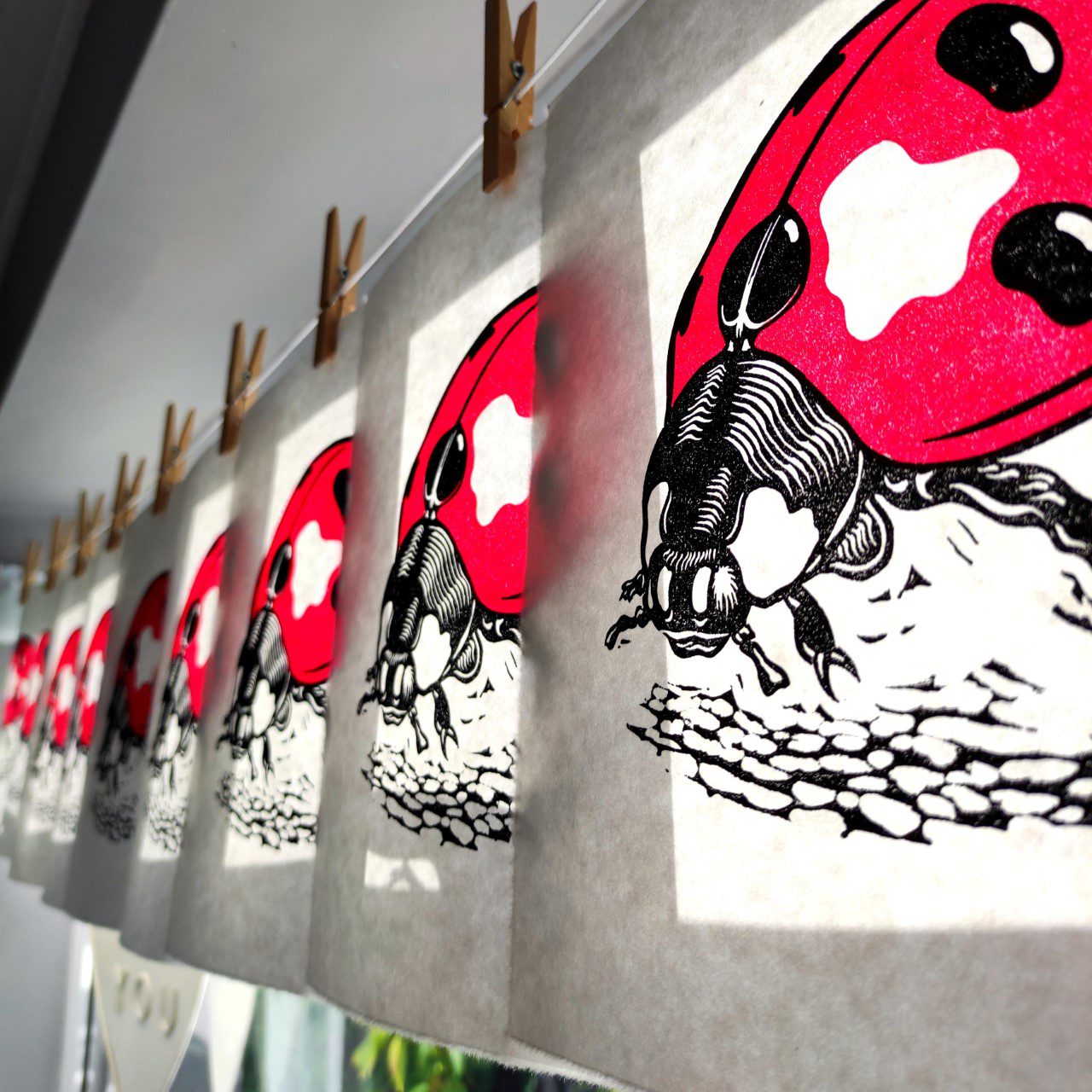STEP 8
You are now ready to print the first layer! I would strongly recommend, again, referring to my blog on ‘How To Make A Homemade Registration Jig’. This will help with how to align your block and paper perfectly.
Ink your colour block. When inking, I find it helpful to build up the layers of ink gradually and in different directions. I like flat, bold colours in my work. Try not to over ink, as this can lead to a ‘bobberly’ effect and may affect how the next layer of ink prints over on top.
Place your block into the registration jig and either run through your press or hand burnish with a baren or spoon.
STEP 9
You have now printed your first layer! Print off as many as you so wish. If you’re aiming for an edition of, say 10, it’s a good idea to print a few more. There are always mistakes and mishaps in printmaking… as frustrating as these can be, they’re always good to learn from!
I tend to use high quality oil-based inks which can be cleaned up with soap and water, although water based inks can also be used and may be easier to use if you are relatively new to lino printing. Oil based inks can take a few days to dry, especially when building up layers on top of each other. To speed up the drying process, I use a colbolt dryer, which dries the inks overnight. There are different drying agents on the market, so do your research if you wish to use one.
STEP 10
Once you have your first layer printed and dried, it’s now time to print the final ‘Key-Block’. Ink up the block, place in the registration jig and repeat the printing process. Remember, the registration (the alignment of your blocks and paper) is the key part to a successful multi-block or reduction print. There are many ways to get a good registration, not just my method, so it’s a good to look thoroughly online for advice on this subject.
STEP 11
Boom! There you have it! Your first multi-block linocut print. If you fancy doing something more adventurous next time, why not try a three-colour print? You’ll just need to do a ghost print of your key block design onto two colour blocks, which means you can implement another colour into your work. You can do as many colours as you like!
Image credits: Andrew Campe

 Login
Login


